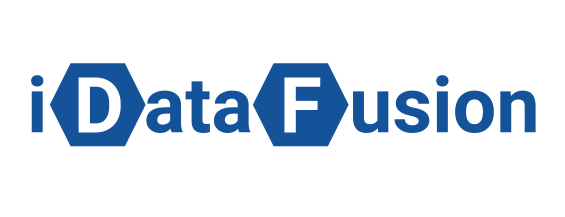Case study
How to build omnichannel analytics in a multi-brand pharma retail
Background
In 2021, one of the leaders in pharma retail was in the process of creating an end-to-end omnichannel marketing analytics system. By that time, the pharmaceutical market had undergone significant changes. Due to COVID lockdowns, the share of online shopping in all retail has increased. In addition, the development of the pharmaceutical market was facilitated by the adoption of the law on distance selling, which increased the volume of orders and provided new opportunities for communication with the client through the delivery of his order.
In the first two quarters of 2020, 18% of clients made a purchase in online pharmacies. According to statistics, at the peak of the lockdown, the conditional percentage reached 43. Those companies in the pharmaceutical market that initially developed ECOM were ready for this demand and, accordingly, received this volume of customers. Thus, the retailer in question took the fourth place.
In the first half of 2020, the volume of the online drug advertising market increased by 43% and continued to grow. The Internet has become the undisputed leader in terms of investment: for example, the cost of TV advertising was in second place after online. Pharma retail sites are also advertising channels, so it was important for the retailer to give the manufacturer more transparency in terms of advertising statistics.
In order to fully cover the increased demand, it is necessary to be present in all communication channels that are convenient for the client. These can be marketplaces, any sites, coupons, own ECOM projects, online stores, mobile applications, call centers, chats. Such a large number of channels requires analytics, analysis and decision making.
The company’s customer communication channel system included 4 websites, 6 applications, an omnichannel call center, marketplaces, network aggregators and referral partners. Analytics for these channels needed to be seen in a single automatically generated report available in real time.
In the first two quarters of 2020, 18% of clients made a purchase in online pharmacies. According to statistics, at the peak of the lockdown, the conditional percentage reached 43. Those companies in the pharmaceutical market that initially developed ECOM were ready for this demand and, accordingly, received this volume of customers. Thus, the retailer in question took the fourth place.
In the first half of 2020, the volume of the online drug advertising market increased by 43% and continued to grow. The Internet has become the undisputed leader in terms of investment: for example, the cost of TV advertising was in second place after online. Pharma retail sites are also advertising channels, so it was important for the retailer to give the manufacturer more transparency in terms of advertising statistics.
In order to fully cover the increased demand, it is necessary to be present in all communication channels that are convenient for the client. These can be marketplaces, any sites, coupons, own ECOM projects, online stores, mobile applications, call centers, chats. Such a large number of channels requires analytics, analysis and decision making.
The company’s customer communication channel system included 4 websites, 6 applications, an omnichannel call center, marketplaces, network aggregators and referral partners. Analytics for these channels needed to be seen in a single automatically generated report available in real time.
Task
It was necessary to develop a multi-brand roll-up report for a top manager:
● by brands
● through inbound sales channels - websites, mobile applications, call centers, partners
● Drill down by sources and mediums
Metrics important to be reflected
● Number of orders in dynamics by channels
● Revenue from these channels
● Volume of orders before redemption
● Average check
● Redemption
● E-com share of total
Reporting periods
● Real time broken down by: Day / Week / Month / Year
● Comparison of the dynamics of metrics in periods
● by brands
● through inbound sales channels - websites, mobile applications, call centers, partners
● Drill down by sources and mediums
Metrics important to be reflected
● Number of orders in dynamics by channels
● Revenue from these channels
● Volume of orders before redemption
● Average check
● Redemption
● E-com share of total
Reporting periods
● Real time broken down by: Day / Week / Month / Year
● Comparison of the dynamics of metrics in periods
Hypotheses
Building a system of end-to-end analytics is directly related to testing hypotheses. Hypothesis formulation allows you to test different ideas and, as a result, optimize marketing. With the help of a built-in end-to-end analytics system, the retailer in question expected to get answers to the following questions:
- How does an increase in advertising budget affect sales through organic channels?.
- How the budgets of one department affect sales in another department.
- Check the presence / absence of a Customer Journey connection in applications with other platforms.
- How to correctly attribute value when building budgeting based on the mutual influence of channels.
- Test the convenience of the service for the client (pickup / delivery / methods of choosing a pharmacy).
- Analyze pricing models by sales channel.
Data limits
- Sketchy data in e-commerce: 4 websites, 6 mobile apps, each connected to CRM, but user data is not merged into one path. Advertising costs by segments. Each project had its own analytics system, there was no single client path.
- Manual operation: Cost data was provided manually as a CSV and then uploaded to Google Cloud Storage.
- Part of marketing and CRM is not digitized: SMS и Email - there was no markup, expenses for partners were not taken into account.
- Differences in order data in Google Analytics vs CMS vs ERP.
Scheme of data collection and processing
Together with the analytical partner iDataFusion, a three-block project was planned.
- The first block: client interaction with advertising before moving to websites - forwarding data from all advertising channels.
- The second block: the sales funnel that the customer goes through when interacting with sales sources, including all online stores, mobile applications, call center.
- The third block: the redemption stage - whether the client returns offline / online for the next purchase, when he made an order online - that is, the actual data on the orders made and the status of them.

Scheme of data collection and processing for end-to-end marketing analytics project by iDataFusion
As a result, we got a classic system integration scheme, in which all data is collected in Google BigQuery.
With the help of iDataFusion services, Google Analytics, AppsFlyer and ERP data are collected and processed, transformed, attribution is calculated and datasets are prepared for visualization.
Visualization of the report on the volume of orders from the source on the retailer ERP data
Monitoring by the volume of orders from the source: sent every hour for the past period in the context of the day "today and yesterday" / week / month / year.
The report was collected manually, sent to the post office daily for every hour, contained a percentage, the number of percentages, amounts, the ratio of one day to a day, week, month and year was calculated using a certain formula. It was possible to see the dynamics only by comparing reports from different letters.
The report was collected manually, sent to the post office daily for every hour, contained a percentage, the number of percentages, amounts, the ratio of one day to a day, week, month and year was calculated using a certain formula. It was possible to see the dynamics only by comparing reports from different letters.

Visualization of the manual report on the volume of orders from the source on the retailer ERP data
Report on the volume of orders for internal services based on analytical DWH data
This report was translated into a dashboard updated in real time with the ability to switch between periods.
The report also serves to notify you of problems with any of the systems connected to the data collection ecosystem. The company had an interesting case: due to problems with the authorization service, the report issued a warning about the lack of data. This allowed us to quickly restore the authorization service without losing sales. Without this system, the problem would have become known much later and, as a result, the company would have lost sales.
The report also serves to notify you of problems with any of the systems connected to the data collection ecosystem. The company had an interesting case: due to problems with the authorization service, the report issued a warning about the lack of data. This allowed us to quickly restore the authorization service without losing sales. Without this system, the problem would have become known much later and, as a result, the company would have lost sales.

Report on the volume of orders for internal services based on analytical DWH data by iDataFusion
Report on the volume of orders for external services based on analytical DWH data
The same dashboard was made for partners with the dynamics that was needed. The report has become one of the tools that project managers use to monitor the situation through one channel or another.

Report on the volume of orders for external services based on analytical DWH data by iDataFusion
Dashboard Results
The final dashboard combines all advertising campaigns, all advertising sources and the ERP system.
This dashboard allows you to analyze many slices, delve into each channel to the keyword, decompose all sources, select one channel and / or touch point, analyze them, or collectively view the entire situation. It is possible to drill down into one or more regions.
This dashboard allows you to analyze many slices, delve into each channel to the keyword, decompose all sources, select one channel and / or touch point, analyze them, or collectively view the entire situation. It is possible to drill down into one or more regions.

Marketing Analytics Dashboard by iDataFusion
Separate dashboards for the contractor
The company now provides exactly the same reports to its contractors who manage advertising campaigns, so that they can more effectively conduct various activities on the Internet based on indicators calculated not only by the Last non-direct Click model, but also taking into account each client touch in the user path chain (Multi-Channel Attribution).
Additional advantages of implementing end-to-end analytics
- Anonymous site visits are combined into a single path using a common anonymous identifier.
- User identification at one touch point propagates to all touch points retrospectively.
- All systems rely on the phone hash as a unique identifier.
- It is possible to conduct AB tests on raw data.
CASE STUDIES
CONTACT US
Drop us a note and we'll get back to you within a day
